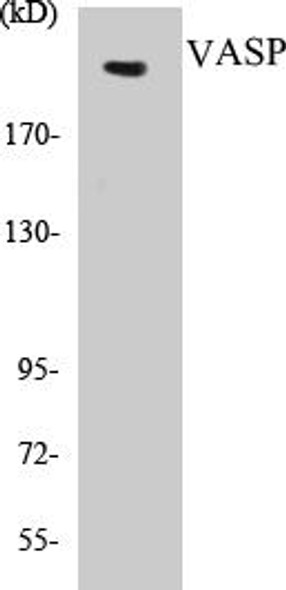Mouse TSC2(Tuberous Sclerosis Protein 2) ELISA Kit
- SKU:
- MOFI01261
- Product Type:
- ELISA Kit
- Size:
- 96 Assays
- Uniprot:
- Q61037
- Sensitivity:
- 9.375pg/ml
- Range:
- 15.625-1000pg/ml
- ELISA Type:
- Sandwich
- Synonyms:
- LAM, TSC2, TSC4, Tuberin, tuberous sclerosis 2, Tuberous sclerosis 2 protein
- Reactivity:
- Mouse
Description
Mouse TSC2 (Tuberous Sclerosis Protein 2) ELISA Kit
The Mouse TSC2 (Tuberous Sclerosis Protein 2) ELISA Kit is a highly sensitive and specific assay designed for the precise quantification of TSC2 levels in mouse serum, plasma, and tissue lysate samples. This kit provides accurate and reproducible results, making it an excellent tool for researchers studying TSC2-related pathways and diseases.TSC2 is a critical protein involved in the regulation of cell growth and proliferation, with mutations in the TSC2 gene linked to the development of tuberous sclerosis complex (TSC).
By measuring TSC2 levels, researchers can gain insights into the pathogenesis of TSC and potentially identify new therapeutic targets for the treatment of this debilitating disorder.Overall, the Mouse TSC2 ELISA Kit offers a reliable method for analyzing TSC2 expression levels in mouse samples, providing valuable information for understanding the role of TSC2 in disease development and progression.
| Product Name: | Mouse TSC2(Tuberous Sclerosis Protein 2) ELISA Kit |
| Product Code: | MOFI01261 |
| Size: | 96 Assays |
| Alias: | LAM, TSC2, TSC4, Tuberin, tuberous sclerosis 2, Tuberous sclerosis 2 protein |
| Detection Method: | Sandwich ELISA |
| Application: | This immunoassay kit allows for the in vitro quantitative determination of Mouse TSC2 concentrations in serum plasma and other biological fluids. |
| Sensitivity: | 9.375pg/ml |
| Range: | 15.625-1000pg/ml |
| Storage: | 4°C for 6 months |
| Note: | For Research Use Only |
| Recovery: | Matrices listed below were spiked with certain level of Mouse TSC2 and the recovery rates were calculated by comparing the measured value to the expected amount of Mouse TSC2 in samples. Not Available. |
| Linearity: | The linearity of the kit was assayed by testing samples spiked with appropriate concentration of Mouse TSC2 and their serial dilutions. The results were demonstrated by the percentage of calculated concentration to the expected. Not Available. |
| Intra Assay: | CV <8% |
| Inter Assay: | CV <10% |
| Component | Quantity | Storage |
| ELISA Microplate (Dismountable) | 8-12 strips | 4°C for 6 months |
| Lyophilized Standard | 2 | 4°C/-20°C |
| Sample/Standard Dilution Buffer | 20ml | 4°C |
| Biotin-labeled Antibody(Concentrated) | 120ul | 4°C (Protect from light) |
| Antibody Dilution Buffer | 10ml | 4°C |
| HRP-Streptavidin Conjugate(SABC) | 120ul | 4°C (Protect from light) |
| SABC Dilution Buffer | 10ml | 4°C |
| TMB Substrate | 10ml | 4°C (Protect from light) |
| Stop Solution | 10ml | 4°C |
| Wash Buffer(25X) | 30ml | 4°C |
| Plate Sealer | 5 | - |
Other materials and equipment required:
- Microplate reader with 450 nm wavelength filter
- Multichannel Pipette, Pipette, microcentrifuge tubes and disposable pipette tips
- Incubator
- Deionized or distilled water
- Absorbent paper
- Buffer resevoir
| Uniprot | Q61037 |
| UniProt Protein Function: | TSC2: a product of the tumor suppressor gene TSC2. Tuberin and Hamartin (TSC1) form a tumor suppressor heterodimer that inhibits the mTOR nutrient signaling input. TSC1/TSC2 targets the small G protein Rheb, a novel mediator of the nutrient signaling input to mTOR. Functions as a Rheb GTPase activating protein (GAP). Four alternatively spliced isoforms have been described. |
| UniProt Protein Details: | Protein type:GAPs; Tumor suppressor; Nuclear receptor co-regulator; Cell cycle regulation; GAPs, misc. Cellular Component: neuron projection; protein complex; intracellular membrane-bound organelle; cell; dendrite; caveola; cytosol; lipid raft; TSC1-TSC2 complex; cytoskeleton; growth cone; cell soma; membrane; perinuclear region of cytoplasm; cytoplasm; intracellular Molecular Function:protein binding; protein homodimerization activity; protein heterodimerization activity; GTPase activator activity; phosphatase binding Biological Process: negative regulation of MAP kinase activity; phosphoinositide 3-kinase cascade; regulation of insulin receptor signaling pathway; negative regulation of Wnt receptor signaling pathway; protein heterooligomerization; regulation of cell cycle; heart development; negative regulation of insulin receptor signaling pathway; negative regulation of cell size; signal transduction; negative regulation of cell proliferation; protein localization; establishment of protein localization; cell projection organization and biogenesis; positive chemotaxis; protein import into nucleus; regulation of endocytosis; acute-phase response; protein kinase B signaling cascade; protein homooligomerization; negative regulation of epithelial cell proliferation; negative regulation of TOR signaling pathway; negative regulation of protein kinase B signaling cascade; regulation of small GTPase mediated signal transduction; insulin-like growth factor receptor signaling pathway; cellular response to insulin stimulus; glucose import; neural tube closure; response to hypoxia; negative regulation of protein kinase activity; positive regulation of transcription from RNA polymerase II promoter; negative regulation of phosphoinositide 3-kinase cascade; positive regulation of GTPase activity |
| UniProt Code: | Q61037 |
| NCBI GenInfo Identifier: | 9297076 |
| NCBI Gene ID: | 9297076 |
| NCBI Accession: | Q61037.1 |
| UniProt Secondary Accession: | Q61037,P97723, P97724, P97725, P97727, Q61007, Q61008 Q9WUF6, |
| Molecular Weight: | 202071 |
| NCBI Full Name: | Tuberin |
| UniProt Protein Name: | Tuberin |
| UniProt Synonym Protein Names: | Tuberous sclerosis 2 protein homolog |
| Protein Family: | Tuberin |
| UniProt Gene Name: | Tsc2 |
| UniProt Entry Name: | TSC2_MOUSE |
*Note: Protocols are specific to each batch/lot. For the correct instructions please follow the protocol included in your kit.
| Step | Procedure |
| 1. | Set standard, test sample and control (zero) wells on the pre-coated plate respectively, and then, record their positions. It is recommended to measure each standard and sample in duplicate. Wash plate 2 times before adding standard, sample and control (zero) wells! |
| 2. | Aliquot 0.1ml standard solutions into the standard wells. |
| 3. | Add 0.1 ml of Sample / Standard dilution buffer into the control (zero) well. |
| 4. | Add 0.1 ml of properly diluted sample (Human serum, plasma, tissue homogenates and other biological fluids.) into test sample wells. |
| 5. | Seal the plate with a cover and incubate at 37 °C for 90 min. |
| 6. | Remove the cover and discard the plate content, clap the plate on the absorbent filter papers or other absorbent material. Do NOT let the wells completely dry at any time. Wash plate X2. |
| 7. | Add 0.1 ml of Biotin- detection antibody working solution into the above wells (standard, test sample & zero wells). Add the solution at the bottom of each well without touching the side wall. |
| 8. | Seal the plate with a cover and incubate at 37°C for 60 min. |
| 9. | Remove the cover, and wash plate 3 times with Wash buffer. Let wash buffer rest in wells for 1 min between each wash. |
| 10. | Add 0.1 ml of SABC working solution into each well, cover the plate and incubate at 37°C for 30 min. |
| 11. | Remove the cover and wash plate 5 times with Wash buffer, and each time let the wash buffer stay in the wells for 1-2 min. |
| 12. | Add 90 µL of TMB substrate into each well, cover the plate and incubate at 37°C in dark within 10-20 min. (Note: This incubation time is for reference use only, the optimal time should be determined by end user.) And the shades of blue can be seen in the first 3-4 wells (with most concentrated standard solutions), the other wells show no obvious color. |
| 13. | Add 50 µL of Stop solution into each well and mix thoroughly. The color changes into yellow immediately. |
| 14. | Read the O.D. absorbance at 450 nm in a microplate reader immediately after adding the stop solution. |
When carrying out an ELISA assay it is important to prepare your samples in order to achieve the best possible results. Below we have a list of procedures for the preparation of samples for different sample types.
| Sample Type | Protocol |
| Serum: | If using serum separator tubes, allow samples to clot for 30 minutes at room temperature. Centrifuge for 10 minutes at 1,000x g. Collect the serum fraction and assay promptly or aliquot and store the samples at -80°C. Avoid multiple freeze-thaw cycles. If serum separator tubes are not being used, allow samples to clot overnight at 2-8°C. Centrifuge for 10 minutes at 1,000x g. Remove serum and assay promptly or aliquot and store the samples at -80°C. Avoid multiple freeze-thaw cycles. |
| Plasma: | Collect plasma using EDTA or heparin as an anticoagulant. Centrifuge samples at 4°C for 15 mins at 1000 - g within 30 mins of collection. Collect the plasma fraction and assay promptly or aliquot and store the samples at -80°C. Avoid multiple freeze-thaw cycles. Note: Over haemolysed samples are not suitable for use with this kit. |
| Urine & Cerebrospinal Fluid: | Collect the urine (mid-stream) in a sterile container, centrifuge for 20 mins at 2000-3000 rpm. Remove supernatant and assay immediately. If any precipitation is detected, repeat the centrifugation step. A similar protocol can be used for cerebrospinal fluid. |
| Cell culture supernatant: | Collect the cell culture media by pipette, followed by centrifugation at 4°C for 20 mins at 1500 rpm. Collect the clear supernatant and assay immediately. |
| Cell lysates: | Solubilize cells in lysis buffer and allow to sit on ice for 30 minutes. Centrifuge tubes at 14,000 x g for 5 minutes to remove insoluble material. Aliquot the supernatant into a new tube and discard the remaining whole cell extract. Quantify total protein concentration using a total protein assay. Assay immediately or aliquot and store at ≤ -20°C. |
| Tissue homogenates: | The preparation of tissue homogenates will vary depending upon tissue type. Rinse tissue with 1X PBS to remove excess blood & homogenize in 20ml of 1X PBS (including protease inhibitors) and store overnight at ≤ -20°C. Two freeze-thaw cycles are required to break the cell membranes. To further disrupt the cell membranes you can sonicate the samples. Centrifuge homogenates for 5 mins at 5000xg. Remove the supernatant and assay immediately or aliquot and store at -20°C or -80°C. |
| Tissue lysates: | Rinse tissue with PBS, cut into 1-2 mm pieces, and homogenize with a tissue homogenizer in PBS. Add an equal volume of RIPA buffer containing protease inhibitors and lyse tissues at room temperature for 30 minutes with gentle agitation. Centrifuge to remove debris. Quantify total protein concentration using a total protein assay. Assay immediately or aliquot and store at ≤ -20 °C. |
| Breast Milk: | Collect milk samples and centrifuge at 10,000 x g for 60 min at 4°C. Aliquot the supernatant and assay. For long term use, store samples at -80°C. Minimize freeze/thaw cycles. |









